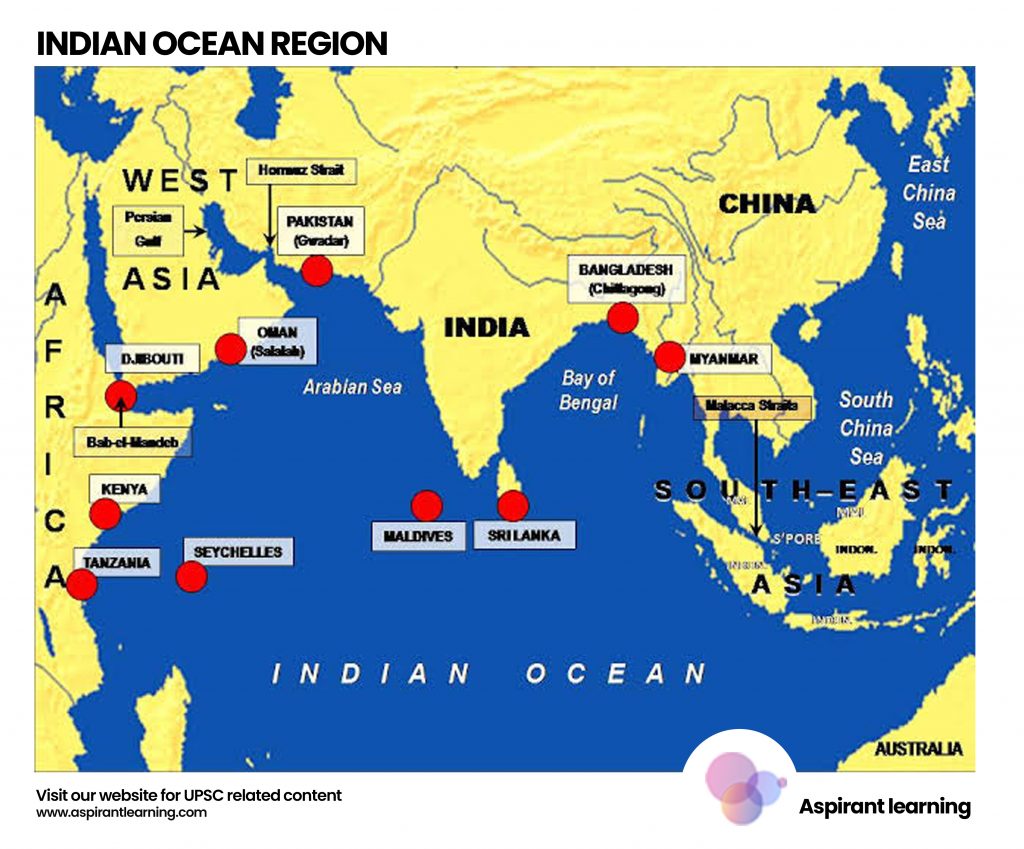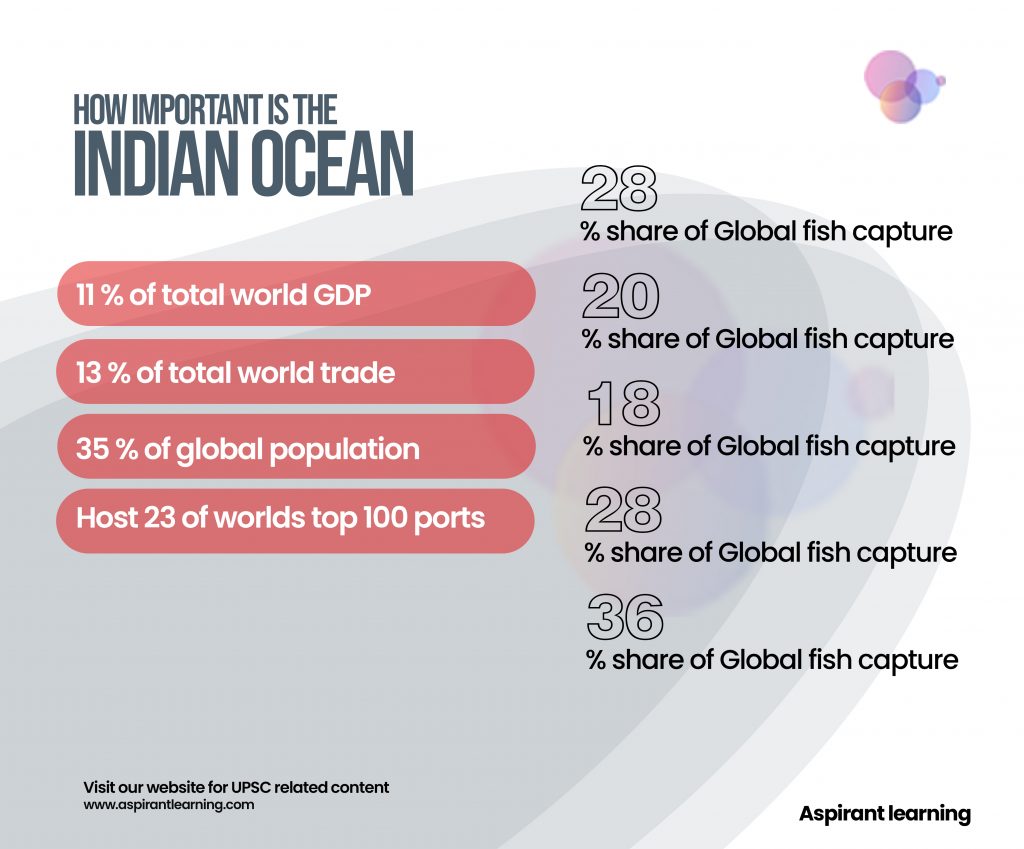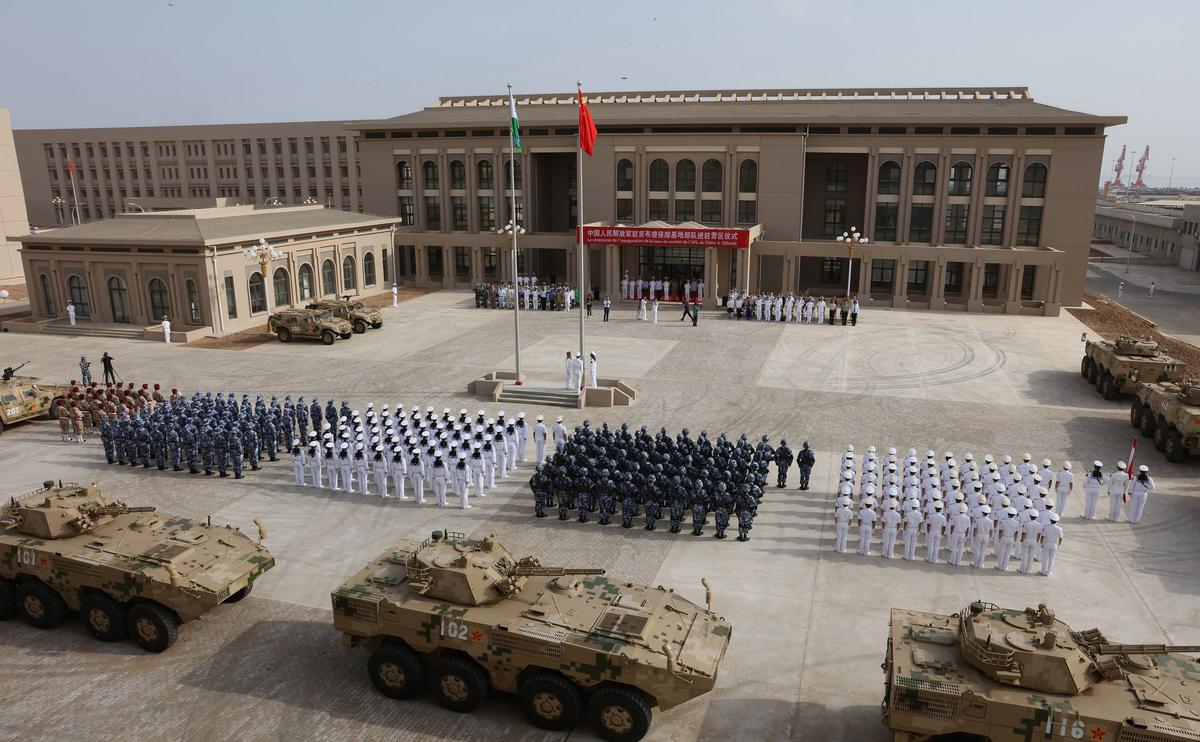News Highlight:
China’s top development aid agency convened the first “China-Indian Ocean Region Forum” in the southwestern Chinese city of Kunming.
Key Takeaway:
- The meeting, organised by the China International Development Cooperation Agency (CIDCA), is the latest Chinese initiative focusing on the Indian Ocean Region (IOR), underlining Beijing’s growing strategic interests in a region where its economic footprint is expanding.
- The CIDCA; is a new foreign aid agency of the People’s Republic of China.
- “China-Indian Ocean Region Forum” is the first high-level official development cooperation forum jointly held by China and countries in the Indian Ocean Region” and “over 100 participants, including senior officials from 19 countries bordering the Indian Ocean”, attended.
- The forum issued a “Joint Press Statement” that noted
- China proposed to establish a marine disaster prevention and mitigation cooperation mechanism between China and countries in the Indian Ocean region.
- all parties agreed” to “strengthen policy coordination, deepen development cooperation, increase resilience to shocks and disasters, and enhance relevant countries’ capacity to obtain economic benefits through the use of marine resources such as fisheries, renewable energy, tourism, and shipping in a sustainable way.
Significance of the Indian Ocean region:
- Maritime Boundary:
- With a coastline of over 7,500 km and more than 1200 islands, India has a natural interest in enhancing maritime security.
- India’s territorial sea has an expanse of 193,834 sq km, while the Exclusive Economic Zone (EEZ) covers 2.02 million sq km.
- Resources:
- The living and non-living resources in this zone, which measure about two-thirds of the country’s landmass, are exclusive to India and the trade and transport facilities that navigate through this area.
- This expanse is also home to 51 per cent of India’s proven oil reserves and 66 per cent of natural gas reserves.
- Maritime Economy:
- India is also the world’s fourth largest producer of fish, most of which comes from the Indian Ocean Region.
- About 95 per cent of India’s international trade by volume and over 70 per cent by value is carried over the seas.
- Energy imports to the extent of 81 per cent of the total domestic oil consumption in 2015-16.
- The extensive network of 13 primary and about 200 minor ports all along the coast supports the maritime economy.
- Sea Lines of Communication (SLOCs):
- Indian oceans supported about four-fifths of world merchandise trade.
- India’s seaborne trade has grown at twice the global growth rate of 3.3 per cent. In contrast, cargo traffic at Indian ports has doubled to 1 billion tonnes per annum over the last decade and is expected to reach 1.7 billion tonnes per annum by 2022, over ten years.
- total of 95 per cent of India’s trade volume.
- India’s Investment in the Indian Ocean:
- India has invested in various sectors like infrastructure, industry, energy, and services in several counties in the immediate maritime neighbourhood and beyond.
- India has made significant strides towards harnessing deep-sea resources with the International Seabed Authority according to its pioneer status and an allocation of 75000 sq km of seabed in the Central Indian Ocean.
- Security threats:
- Militarily, a long coastline makes India vulnerable to potential threats emerging from the sea. One of the worst terrorist attacks in Mumbai was perpetrated by terrorists arriving by sea. India’s nuclear installations and coastal cities are under continuous threat from state and non-state actors. Thus, keeping an eye on the sea is important.
- Diaspora:
- India has had trade and cultural links with several countries in the IOR from time immemorial.
- Eight million NRIs are employed in various sectors in Gulf and Middle East region alone. Remittances from this Diaspora exceeded $ 100 billion in 2014.

Indian Ocean Region Forum:
- About:
- Organiser:
- Beijing’s new development aid agency, China International Development Cooperation Agency (CIDCA).
- Participants:
- “high-level representatives” from 19 countries, including Indonesia, Pakistan, Myanmar, Sri Lanka, Bangladesh, Maldives, Nepal, Afghanistan, Iran, Oman, South Africa, Kenya, Mozambique, Tanzania, Seychelles, Madagascar, Mauritius, Djibouti, and Australia.
- No representative from India was invited.
- Proposals at Forum:
- A marine disaster prevention and mitigation cooperation mechanism between China and countries in the IOR.
- All parties agreed” to “strengthen policy coordination, deepen development cooperation, and increase resilience to shocks and disasters.
- Enhance relevant countries’ capacity to obtain economic benefits by using marine resources such as fisheries, renewable energy, tourism, and shipping in a sustainable way
- Organiser:
- Concerns:
- A new forum for IOR countries, despite the other successfully established forums, is worrisome.
- China has been relentlessly trying to ramp up political, economic and security inroads in the region despite being geographically far from IOR.
- China has often been accused of engaging in “debt diplomacy”
- China aimed at countering India’s strong influence in the region.
- China’s eye on the vast resource base of the Indian Ocean and passage of strategic sea lines of communication through the IOR.
How is the China Indian Ocean Region Forum different from the Indian Ocean Rim Association?
- About Indian Ocean Rim Association
- The idea for IORA first surfaced during the late South African President Nelson Mandela’s 1995 visit to India.
- IORA is an intergovernmental organisation dedicated to fostering regional cooperation and sustainable development in the Indian Ocean region through its 23 Member States bordering the Indian Ocean and 10 Dialogue Partners
- It is a regional forum that is tripartite and brings together representatives of Government, Business, and Academia, to foster cooperation and closer engagement among them.
- It is founded on the tenets of open regionalism. It aims to strengthen economic cooperation, notably in the areas of investment and trade facilitation, promotion, and social development in the region.

- Indian Ocean Rim Association (IORA) – Objectives:
- Promoting balanced development and sustainable growth in the regions of the Member States.
- Considering areas that provide maximum opportunities for development through economic cooperation.
- Other objectives to help member countries achieve an enhanced flow of goods, services, investment, and technology include:
- Promoting liberalisation.
- Removing impediments.
- Lowering barriers.
Way Forward:
India has a strong influence in the Indian Ocean region, where India-backed organisations like the IORA have taken strong roots. India should focus to strengthen economic cooperation in areas of investment and trade facilitation, promotion, and social development in the region to counter Chinese hegemony.
Pic Courtesy:
Content Source:



